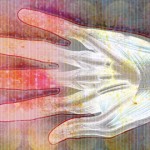CTS remains primarily a clinical diagnosis. Ultrasound and EPS are confirmatory studies that complement each other because the former modality provides anatomic information, while the latter assesses function. Use of either depends upon availability and the patient’s specific clinical needs.
Ultrasound may also have a place in evaluating EPS-negative patients with compelling symptoms and signs of CTS. It’s clearly useful for evaluating structural concerns that may be precipitating median neuropathy within the carpal tunnel, as well as determining the cause of continued symptoms following surgery. As our case illustrates, direct visualization of the cause of compressive median neuropathy may prove essential to guide treatment.
As Goethe once said, “One only sees what one looks for.” It may be time to start looking.
 Mark H. Greenberg, MD, RMSK, RhMSUS, He did his rheumatology fellowship at the Albert Einstein-Montefiore Medical Center in The Bronx, New York. He is board certified in internal medicine and rheumatology. He is an associate professor of medicine at the University of South Carolina School of Medicine at Palmetto Health USC Medical Group in Columbia, S.C.
Mark H. Greenberg, MD, RMSK, RhMSUS, He did his rheumatology fellowship at the Albert Einstein-Montefiore Medical Center in The Bronx, New York. He is board certified in internal medicine and rheumatology. He is an associate professor of medicine at the University of South Carolina School of Medicine at Palmetto Health USC Medical Group in Columbia, S.C.
 Julian Greer received her BS in exercise science from the University of South Carolina. She is a third-year medical student at the University of South Carolina School of Medicine.
Julian Greer received her BS in exercise science from the University of South Carolina. She is a third-year medical student at the University of South Carolina School of Medicine.
 James W. Fant Jr., MD, completed his rheumatology fellowship at Wilford Hall USAF Medical Center, Lackland Air Force Base in San Antonio, Texas. He is board certified in internal medicine and rheumatology. He is an associate professor of medicine at the University of South Carolina School of Medicine and director of the Rheumatology Division at Palmetto Health USC Medical Group in Columbia, S.C.
James W. Fant Jr., MD, completed his rheumatology fellowship at Wilford Hall USAF Medical Center, Lackland Air Force Base in San Antonio, Texas. He is board certified in internal medicine and rheumatology. He is an associate professor of medicine at the University of South Carolina School of Medicine and director of the Rheumatology Division at Palmetto Health USC Medical Group in Columbia, S.C.
References
- Atroshi I, Gummesson C, Johnsson R, et al. Prevalence of carpal tunnel syndrome in a general population. JAMA. 1999 Jul 14;282(2):153–158.
- Biachi S, Martinoli C. (2007). Ultrasound of the Musculoskeletal System. 458–467. Springer.
- Kothari MJ, Shefner JM, Dashe JF. Carpal tunnel syndrome: Etiology and epidemiology. UpToDate. Wolters Kluwer. Aug 25, 2017.
- Shiri R. Arthritis as a risk factor for carpal tunnel syndrome: A meta-analysis. Scand J Rheumatol. 2016 Oct;45(5):339–346.
- Kothari MJ, Shefner JM, Dashe JF. Carpal tunnel syndrome: Clinical manifestations and diagnosis. UpToDate. Wolters Kluwer. Mar 9, 2017.
- Werner RA, Andary M. Electrodiagnostic evaluation of carpal tunnel syndrome. Muscle Nerve. 2011 Oct;44(4):597–607.
- Atroshi I, Gummesson C, Johnsson R, et al. Diagnostic properties of nerve conduction tests in population-based carpal tunnel syndrome. BMC Musculoskelet Disord. 2003 May 7;4:9.
- Lee D, van Holsbeeck MT, Janevski PK, et al. Diagnosis of carpal tunnel syndrome. Ultrasound versus electromyography. Radiol Clin North Am. 1999 Jul;37(4):859–872.
- Duncan I, Sullivan P, Lomas F. Sonography in the diagnosis of carpal tunnel syndrome. Am J Roentgenol. 1999 Sep;173(3):681–684.
- Hobson-Webb LD, Massey JM, Juel VC, et al. The ultrasonographic wrist-to-forearm median nerve area ratio in carpal tunnel syndrome. Clin Neurophysiol. 2008 Jun;119(6):1353–1357.
- Buchberger W, Judmaier W, Birbamer G, et al. Carpal tunnel syndrome: Diagnosis with high-resolution sonography. Am J Roentgenol. 1992 Oct;159(4):793–798.
- Cartwright MS, Hobson-Webb LD, Boon AJ, et al. Evidence-based guideline: Neuromuscular ultrasound for the diagnosis of carpal tunnel syndrome. Muscle Nerve. 2012 Aug;46(2):287–293.
- Kanikannan MA, Boddu DB, Umamahesh, et al. Comparison of high-resolution sonography and electrophysiology in the diagnosis of carpal tunnel syndrome. Ann Indian Acad Neurol. 2015 Apr–Jun;18(2): 219–225.
- Kim MK, Jeon HJ, Park SH, et al. Value of ultrasonography in the diagnosis of carpal tunnel syndrome: Correlation with electrophysiological abnormalities and clinical severity. J Korean Neurosurg Soc. 2014 Feb;55(2):78–82.
- Fowler JR, Munsch M, Tosti R, et al. Comparison of ultrasound and electrodiagnostic testing for diagnosis of carpal tunnel syndrome: Study using a validated clinical tool as the reference standard. J Bone Joint Surg Am. 2014 Sep 3;96(17).
- Kang S, Kwon HK, Kim KH, et al. Ultrasonography of median nerve and electrophysiologic severity in carpal tunnel syndrome. Ann Rehabil Med. 2012 Feb;36(1):72–79.
- Witt JC, Hentz JG, Stevens JC. Carpal tunnel syndrome with normal nerve conduction studies. Muscle Nerve. 2004 Apr;29(4):515–522.
- Koyuncuoglu HR, Kutluhan S, Yesildag A, et al. The value of ultrasonographic measurement in carpal tunnel syndrome in patients with negative electrodiagnostic tests. Eur J Radiol. 2005 Dec;56(3):365–369.
- Fowler JR, Gaughan JP, Ilyas AM. The sensitivity and specificity of ultrasound for the diagnosis of carpal tunnel syndrome: A meta-analysis. Clin Orthop Relat Res. 2011 Apr;469(4):1089–1094.
- American Academy of Orthopaedic Surgeons. Management of carpal tunnel syndrome evidence-based clinical practice guideline. Feb 29, 2016.
- Greenberg MH, Fant JW Jr. Effectiveness of ultrasound-guided compared to blind steroid injections in the treatment of carpal tunnel syndrome. Arthritis Care Res (Hoboken). 2017 Oct 17;69:1060–1065.
- Evers S, Bryan AJ, Sanders TL, et al. Effectiveness of ultrasound-guided compared to blind steroid injections in the treatment of carpal tunnel syndrome. Arthritis Care Res (Hoboken). 2017 Jul;69(7):1060–1065.
- Jones NF, Ahn HC, Eo S. Revision surgery for persistent and recurrent carpal tunnel syndrome and for failed carpal tunnel release. Plast Reconstr Surg. 2012 Mar;129(3):683–692.


